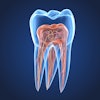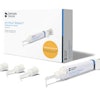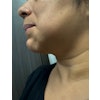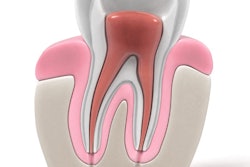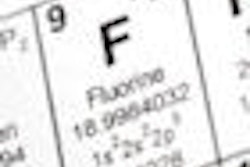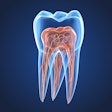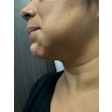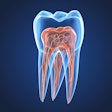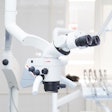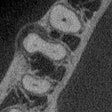
The lack of predictable performance by an endodontic file when cleaning a root canal system, particularly in the apical portion, can limit cleaning efficiency.
A study comparing the shaping ability of single-file and full-sequence nickel-titanium (NiTi) systems in severely curved root canals found that Reciproc and Mtwo (VDW) yielded superior canal cleanliness over WaveOne and ProTaper by Dentsply (International Endodontic Journal, December 22, 2011).
The researchers, from the University of Münster, also determined that both instruments successfully kept the original curvature of the canals and were safe to use in the extracted teeth they tested the devices on.
"Up to now, there are no studies available concerning the shaping ability and cleaning efficiency of these recently introduced instruments used in reciprocating motion," the study authors wrote of Reciproc and WaveOne, highlighting the need to evaluate them.
The researchers also compared the performance of the new instruments with that of their older counterparts, Mtwo and ProTaper, two full-sequence rotary NiTi systems by the same manufacturers that served as controls.
Extracted teeth
For this study the researchers used 80 extracted human teeth that had at least one curved root and curved root canal. Only teeth with intact root apices, and whose root canal width near the apex was approximately compatible with size 15, were included, the authors noted.
After x-rays were taken, the team ascertained the degree and the radius of canal curvature with a digital image processing system. Teeth with radii of curvature that ranged from 3.1 mm to 10.6 mm with angles of curvature between 25° and 39° were selected for the study.
Based on the degree and the radius of curvature, the teeth and the distance between the apex and the cementoenamel junction were separated into four identical groups of 20, the researchers explained. After preparation, they redetermined the curvature of the canals.
In the instrumentation procedure, each instrument was limited to enlarging four canals using the same 6:1 contra-angle handpiece. During the preparation sequence, each instrument was maneuvered to the end of the canal using the manufacturers' instructions until it rotated without obstruction and was then removed.
Afterward, the canal was flushed with a 2.5% sodium hypochlorite (NaOCl) solution using flexible NaviTip needles (Ultradent Products) to navigate deep curves in the specimens. Total canal preparation times were recorded. Scanning electron microscopy investigation took place after the roots were split longitudinally, and the samples were given a score of 1 to 5 (1 being the best) based on the amount of dentine chips, pulp remnants, and other particles remaining attached to the canal wall. The smear layer was similarly evaluated with a 1 to 5 score.
One file faster
The researchers found that the Reciproc single-file system was significantly faster than the other instruments (p < 0.05) during the instrumentation procedure, while WaveOne was significantly faster than Mtwo and ProTaper (p < 0.05). In fact, Reciproc reduced preparation time by up to 60% compared with Mtwo or ProTaper. Interestingly, those two files performed similarly in terms of preparation time, although the Mtwo system required five instruments to complete the task while the ProTaper system needed six.
For debris removal, the Mtwo and Reciproc instruments achieved significantly better results (p < 0.05) than the other instruments in the apical third of the canals.
When canal straightening was considered, all four files performed comparably. "The single-file systems evaluated in this study maintained the original canal curvature well," the authors wrote.
In terms of cleanliness, the researchers found no significant differences in performance for the remaining smear layer. However, the ProTaper left significantly more debris after instrumentation than the other instruments. When the researchers considered cleanliness in the apical third of the canals, the Reciproc and Mtwo systems outperformed the Dentsply devices in terms of debris remaining after instrumentation.
"Special flute and cross-sectional design features (sharp cutting edges and a great chip space) may explain the relatively good debris removal capacity of Mtwo and Reciproc files," the researchers suggested.
